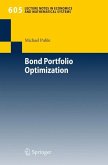Valuing portfolios of options embedded in investment decisions is arguably one of the most important and challenging problems in real options and corporate ?nance in general. Although the problem is common and vitally important in the value creation process of almost any corporation, it has not yet been satisfactorily addressed. It is key for any corporation facing strategic resource allocation decisions, be it a pharmaceutical ?rm valuing and managing its pipeline of drugs, a telecom company having to select a set of technological alternatives, a venture capital or private equity ?rm investing in a portfolio of ventures, or any company allocating resources. Portfolios of real options typically interact such that the value of the whole differs from the sum of the separate parts. Thus one must address and value the particular con?guration of options embedded in a speci?c situation, taking into account the con?guration of other options already present in the portfolio, which in turn depends on the correlation struc ture among the various underlying assets and the strategic dependencies among the options themselves (e. g. , mutual exclusivity, strategic additiv ity, compoundness, complementarity etc. ). In that sense, optimal decisions also depend on past option exercise decisions by management and organi zational capabilities put in place in the past.
Hinweis: Dieser Artikel kann nur an eine deutsche Lieferadresse ausgeliefert werden.
Hinweis: Dieser Artikel kann nur an eine deutsche Lieferadresse ausgeliefert werden.
From the reviews:
"This book develops a modeling approach for dynamic investment problems where limited resources are allocated to interacting risky projects over time under the assumption that the market is complete and the agent is risk neutral. The author sets up the pricing model as a real options problem involving path-dependent (dis-) investment decisions. ... this book provides an important reference for both the practitioners and academics in this field." (Zhaojun Yang, Mathematical Reviews, Issue 2012 i)
"This book develops a modeling approach for dynamic investment problems where limited resources are allocated to interacting risky projects over time under the assumption that the market is complete and the agent is risk neutral. The author sets up the pricing model as a real options problem involving path-dependent (dis-) investment decisions. ... this book provides an important reference for both the practitioners and academics in this field." (Zhaojun Yang, Mathematical Reviews, Issue 2012 i)








